The Zulu warrior, a figure of strength and tradition, is instantly recognizable by their striking attire—a blend of practicality and profound cultural symbolism.
Originating from the rolling hills of what is now South Africa, the Zulu Kingdom rose to prominence in the early 19th century under the leadership of Shaka Zulu, whose military innovations reshaped Southern Africa.
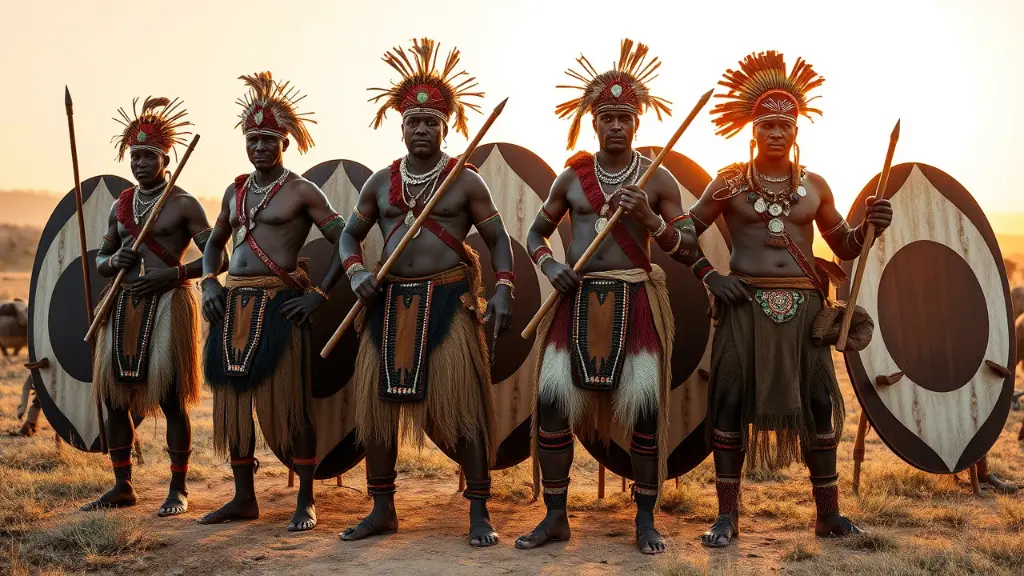
Central to the Zulu warrior’s identity was their attire, which served not only as battle gear but also as a canvas of social status, bravery, and community values. In this article, we’ll explore the intricate details of Zulu warrior attire, its historical roots, and its enduring legacy in modern times.
Historical Background: The Rise of the Zulu Warrior
The Zulu Kingdom emerged as a dominant force under King Shaka Zulu (c. 1787–1828), whose revolutionary tactics transformed tribal warfare. Prior to Shaka’s reign, battles among Nguni clans were often ritualistic, with minimal casualties.
See also Tuareg Indigo Mystique: How Desert Blue Defines Cultural Identity
Tuareg Indigo Mystique: How Desert Blue Defines Cultural Identity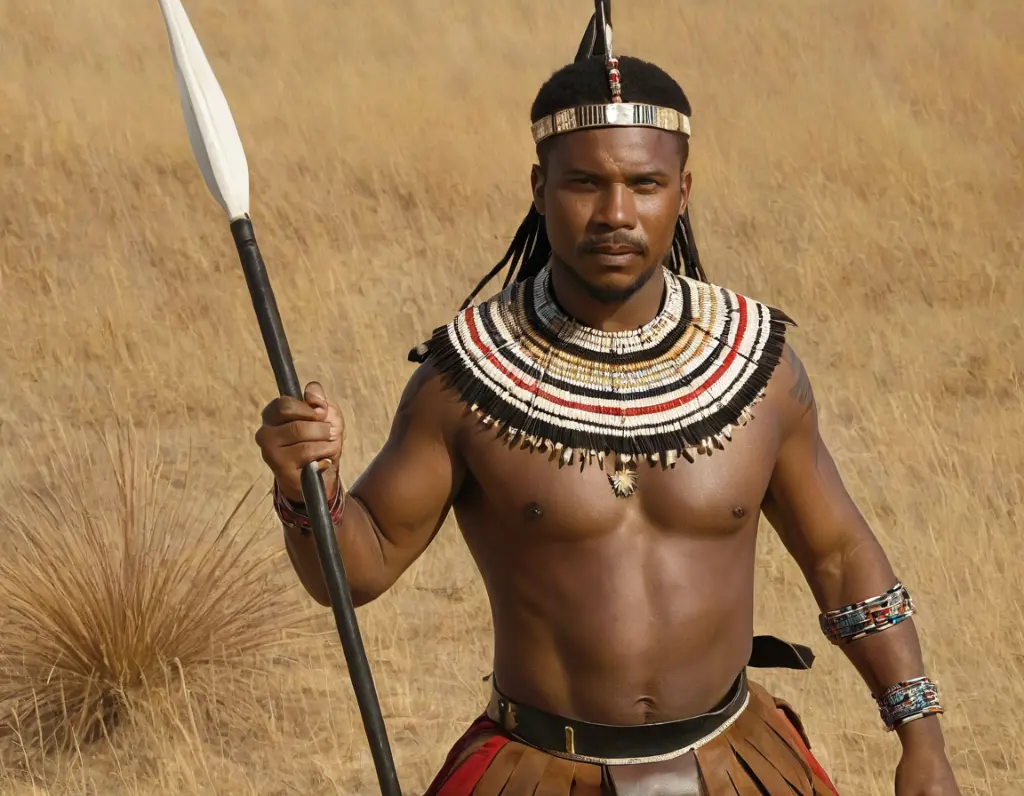
Shaka introduced the iklwa (a short stabbing spear) and the isihlangu (a large cowhide shield), which became iconic symbols of Zulu martial prowess. His reforms extended to attire, standardizing gear to foster unity and discipline.
Zulu warriors, known as amabutho, were grouped by age and region, with their attire reflecting their rank and achievements. This system not only strengthened military efficiency but also deepened cultural identity, as clothing and accessories became markers of honor.
Key Components of Zulu Warrior Attire
1. The Isihlangu Shield: More Than Just Protection
The isihlangu (literally “to brush aside”) was a warrior’s primary defense. Crafted from cowhide, it was both lightweight and durable. Shields were treated with animal fat to repel moisture and measured up to 5 feet tall, offering cover during charges.
- Color and Status: Shield color indicated a warrior’s experience. Younger warriors carried white shields, while veterans bore black or red ones, symbolizing blood and maturity.
- Patterns: Unique markings identified the warrior’s regiment, fostering camaraderie and coordination in battle.
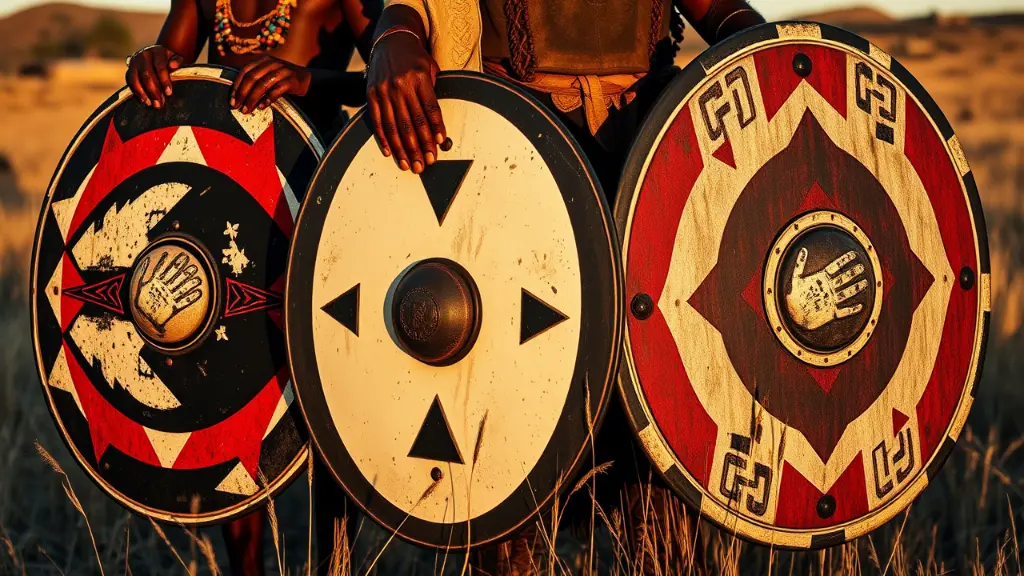
2. Weapons: The Iklwa and Beyond
The iklwa, Shaka’s signature weapon, was a short spear with a broad blade, designed for close combat. Its name mimicked the sound it made when withdrawn from a body. Warriors also carried throwing spears (assegai) and clubs (iwisa) for ranged attacks.
See also The Maasai: Semi-Nomadic Pastoralists of Kenya and Tanzania
The Maasai: Semi-Nomadic Pastoralists of Kenya and Tanzania- Ceremonial Use: Weapons were often adorned with beadwork or feathers during rituals, blending function and spirituality.

3. Clothing: Animal Hides and Practical Design
Zulu warriors wore minimal clothing to maximize mobility. A umncedo (loincloth) made from animal hide was standard, paired with a ibeshu (rear apron) for added coverage.
- Headdresses: Leaders donned izicolo, headrings made from grass and resin, signifying marital status and authority.
- Leg and Arm Cuffs: Cowhide straps protected limbs and showcased strength through intricate beadwork.
4. Accessories: Beads, Feathers, and Symbolism
Beadwork was a language unto itself. Colors conveyed messages: white for purity, blue for fidelity, and green for contentment. Feathers from ostriches or cranes denoted bravery, often earned through battlefield deeds.
- Necklaces and Arm Rings: Crafted from bone, copper, or beads, these items highlighted a warrior’s achievements and social standing.
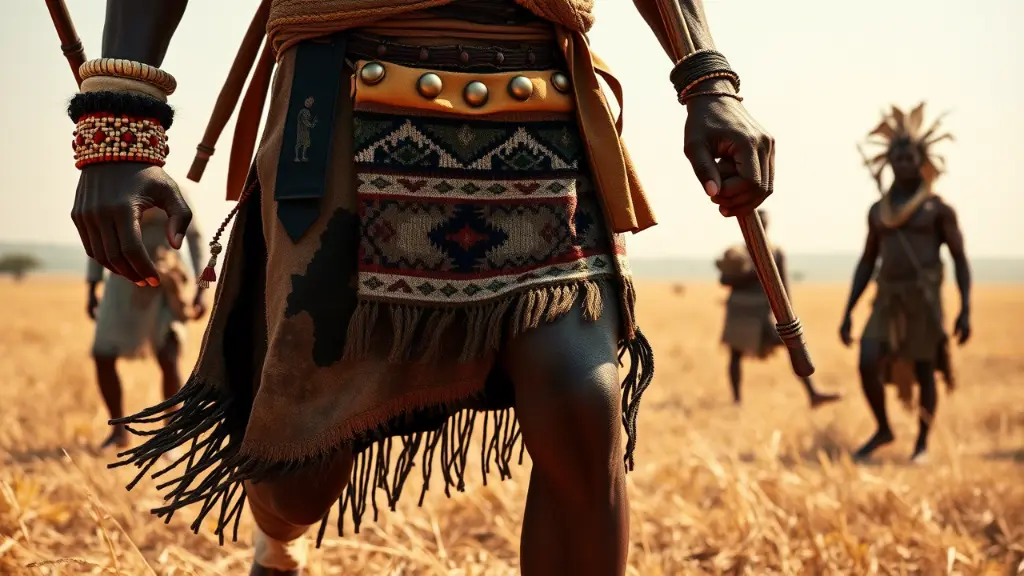
Symbolism and Cultural Significance
Every element of Zulu attire carried meaning. The shield’s size reflected a warrior’s role—larger for front-line fighters, smaller for scouts. Beadwork patterns told personal stories, such as marital status or ancestral pride.
Rituals: Before battle, warriors participated in ceremonies where elders blessed their gear. This spiritual preparation was as vital as physical training, linking them to ancestors and the divine.
Evolution Over Time: From Shaka to Modernity
Shaka’s innovations laid the foundation, but colonialism and urbanization brought changes. Post-1879 Anglo-Zulu War, traditional weapons were replaced by firearms, and Western clothing became common. However, Zulu attire persisted in cultural ceremonies, such as umemulo (coming-of-age) and Reed Dance.
Today, artisans keep traditions alive, crafting shields and beadwork for tourists and cultural festivals. Modern Zulu soldiers in the South African Army occasionally incorporate traditional elements into ceremonial uniforms, honoring their heritage.
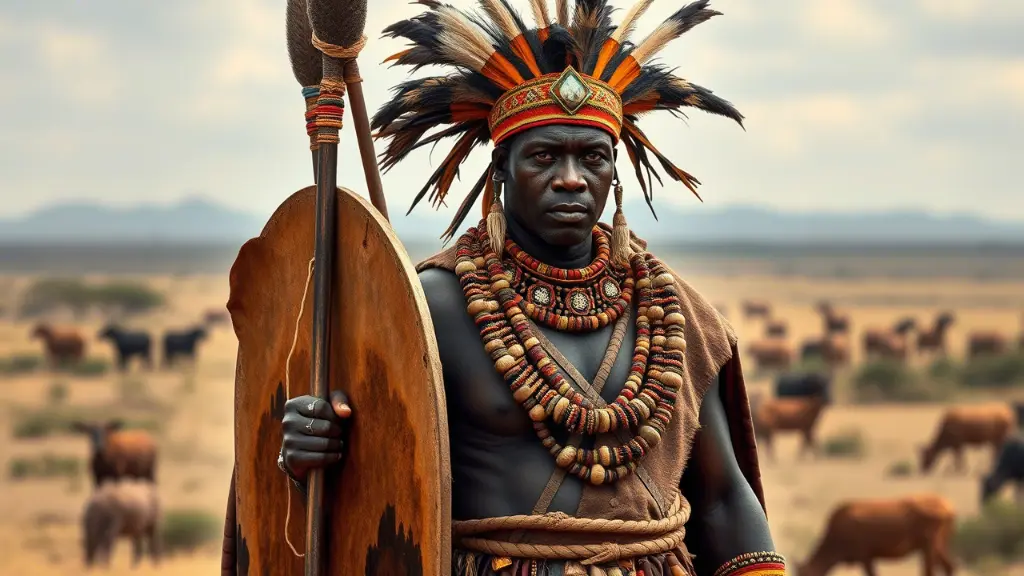
Role in Battle: Functionality Meets Strategy
Zulu tactics, like the “bull horn” formation, relied on speed and coordination. Lightweight attire allowed swift movement, while shields doubled as tools to hook opponents’ weapons. The iklwa’s design enabled quick strikes, crucial in close-quarters combat.
Modern-Day Relevance: Preserving Heritage
Zulu attire remains a vibrant part of South Africa’s cultural tapestry. Museums like the KwaZulu-Natal Museum display historical pieces, while festivals celebrate craftsmanship. For the Zulu people, these traditions are a bridge to their ancestors and a source of national pride.
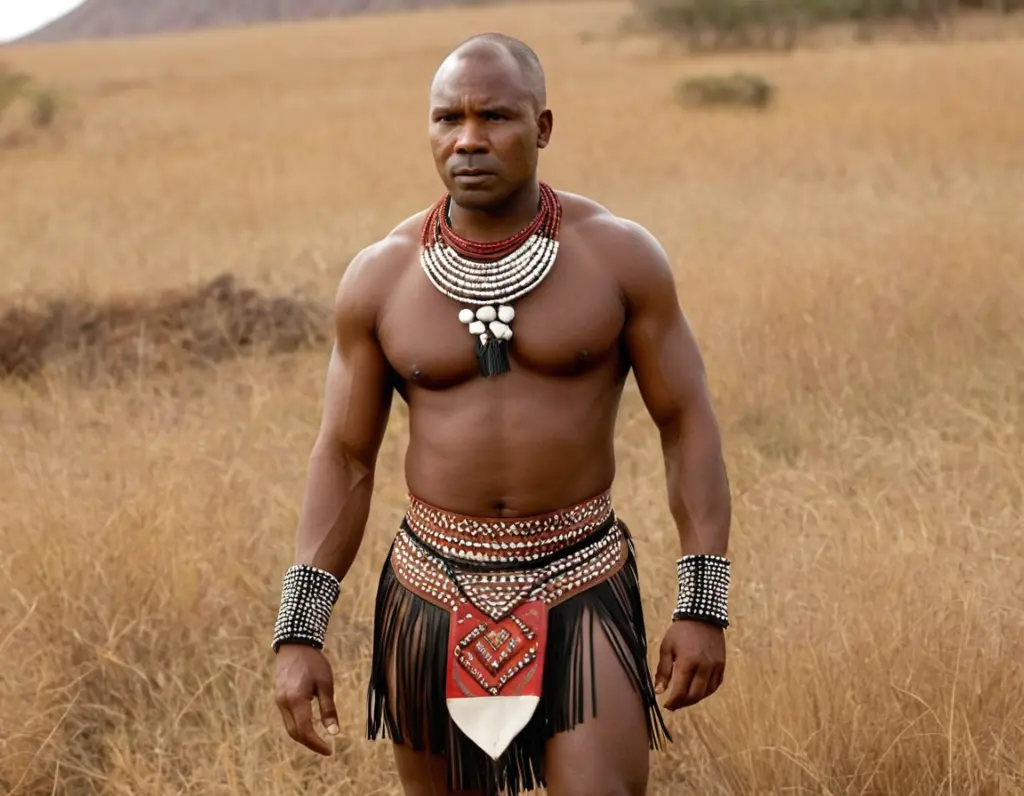
Zulu warrior attire is a testament to ingenuity and identity. From the battlefields of the 19th century to today’s cultural celebrations, each shield, bead, and spear tells a story of resilience. By understanding these traditions, we honor the Zulu legacy—a blend of art, history, and unyielding spirit.
This exploration not only illuminates the past but also inspires appreciation for the rich cultural narratives woven into every piece of Zulu attire. Whether in a museum or a modern ceremony, the warrior’s garb continues to command respect and admiration.




